1935-D Washington Quarter , Milk Spot? Concerns/Questions
 Matt04
Posts: 318 ✭✭✭
Matt04
Posts: 318 ✭✭✭
Alright everyone, I just got in this 1935-D in what otherwise is spectacular Gem Condition other than a few areas of concern. I have several concerns. Firstly, the milk spots that seem to be on the obverse. Will these spots prevent a coin from being graded? Is there anyway to remove them? Secondly, a dark tiny spot on the eagle right wing, would this be considered Env Damage? as well as a barely visible scratch that is like a hairline. Thirdly, reverse has areas that the luster seems to be faint, is this look normal or something caused by dipping? It still looks great and has a cartwheel when under light. From observing this seems to be in the Range of MS65, because of luster and fields at top end 66? Let me know what you guys think!
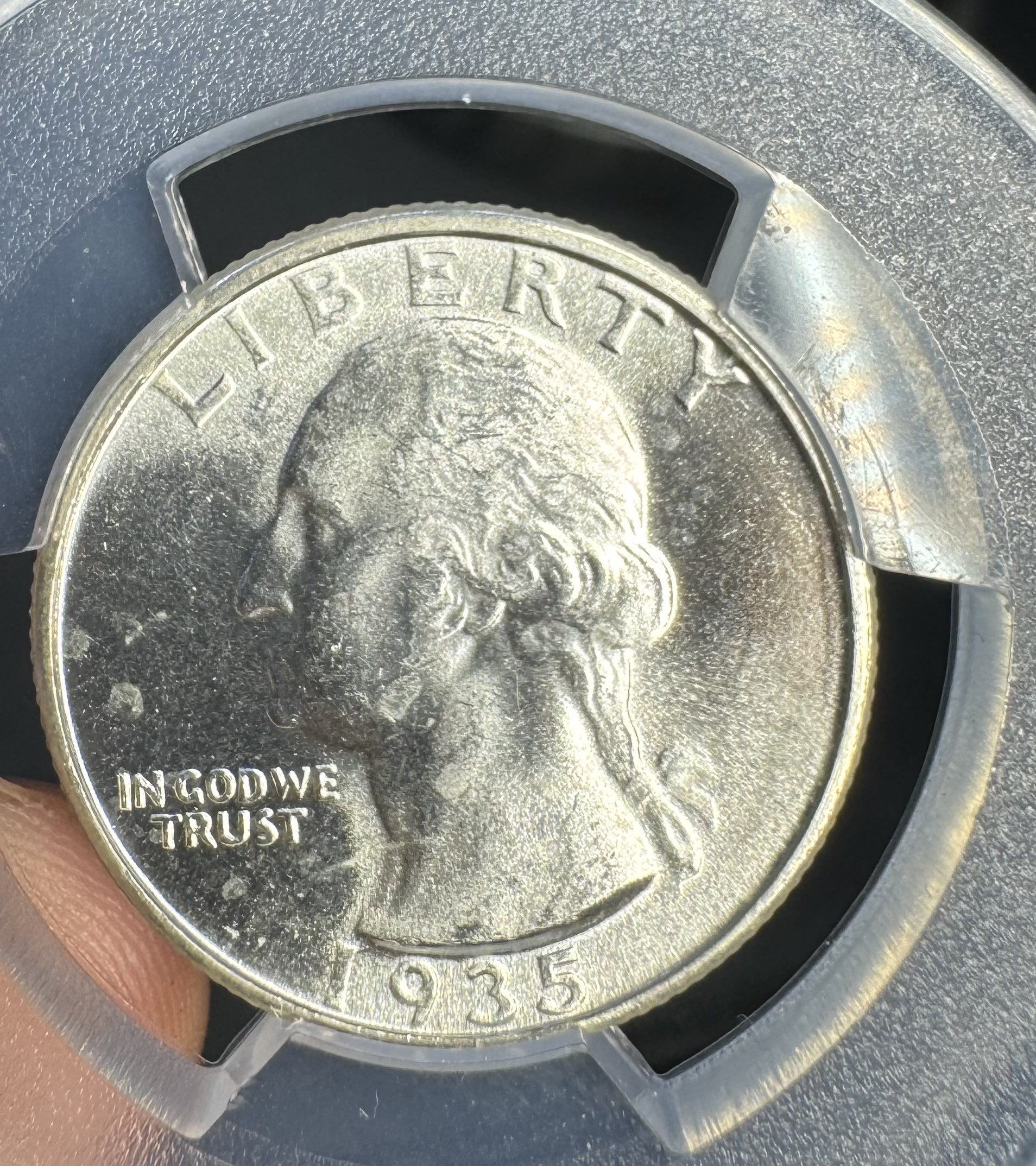
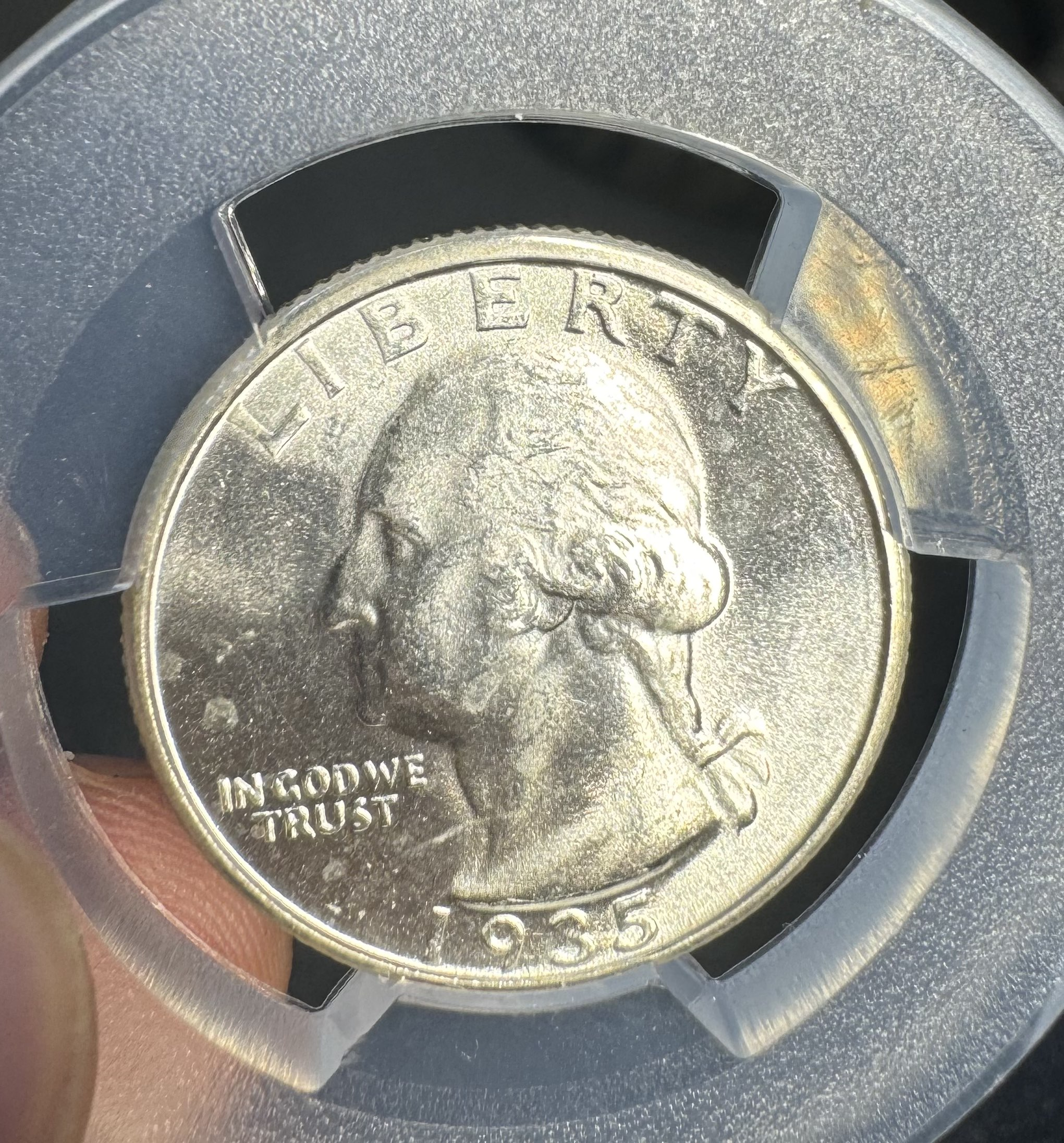
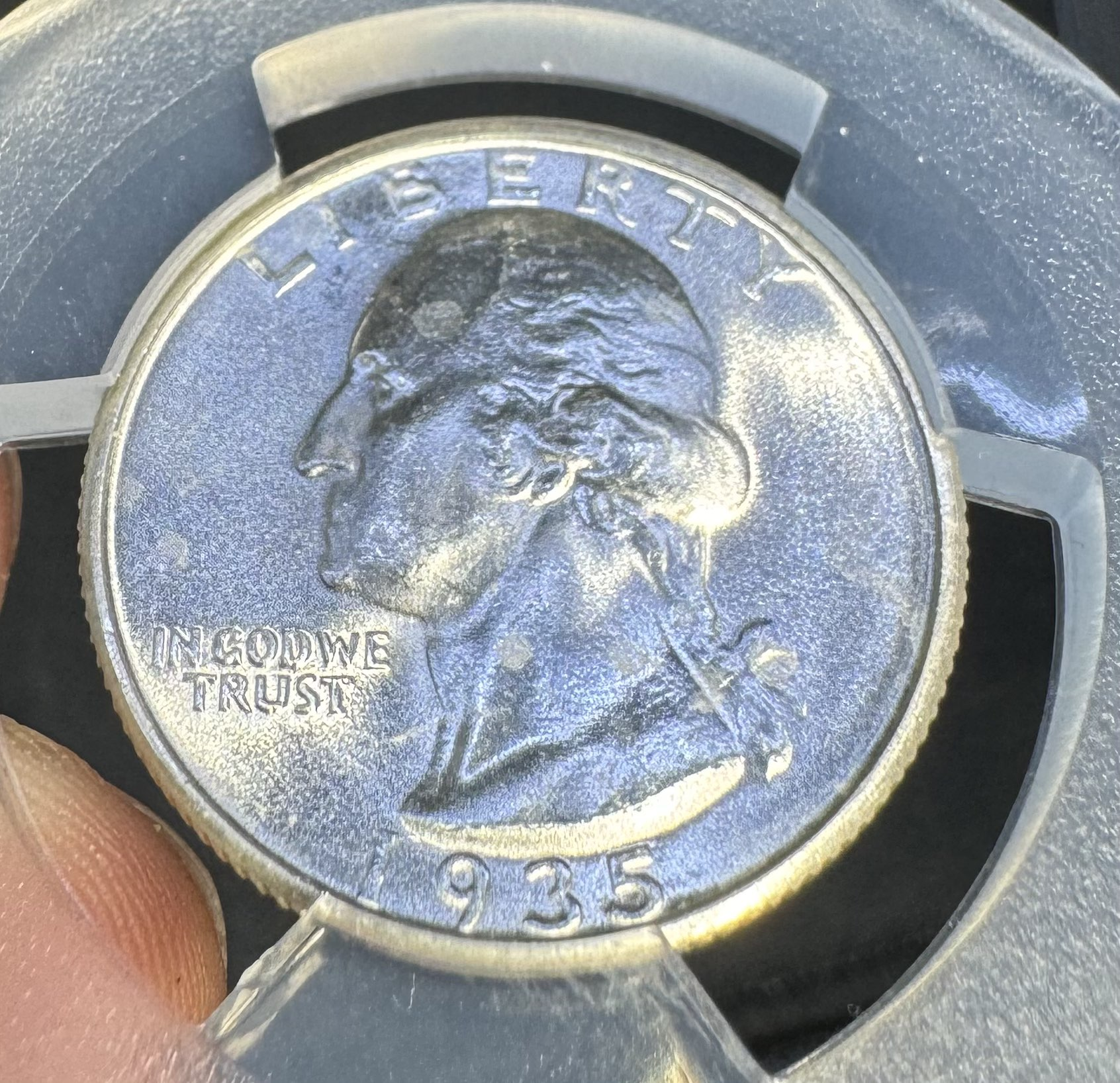
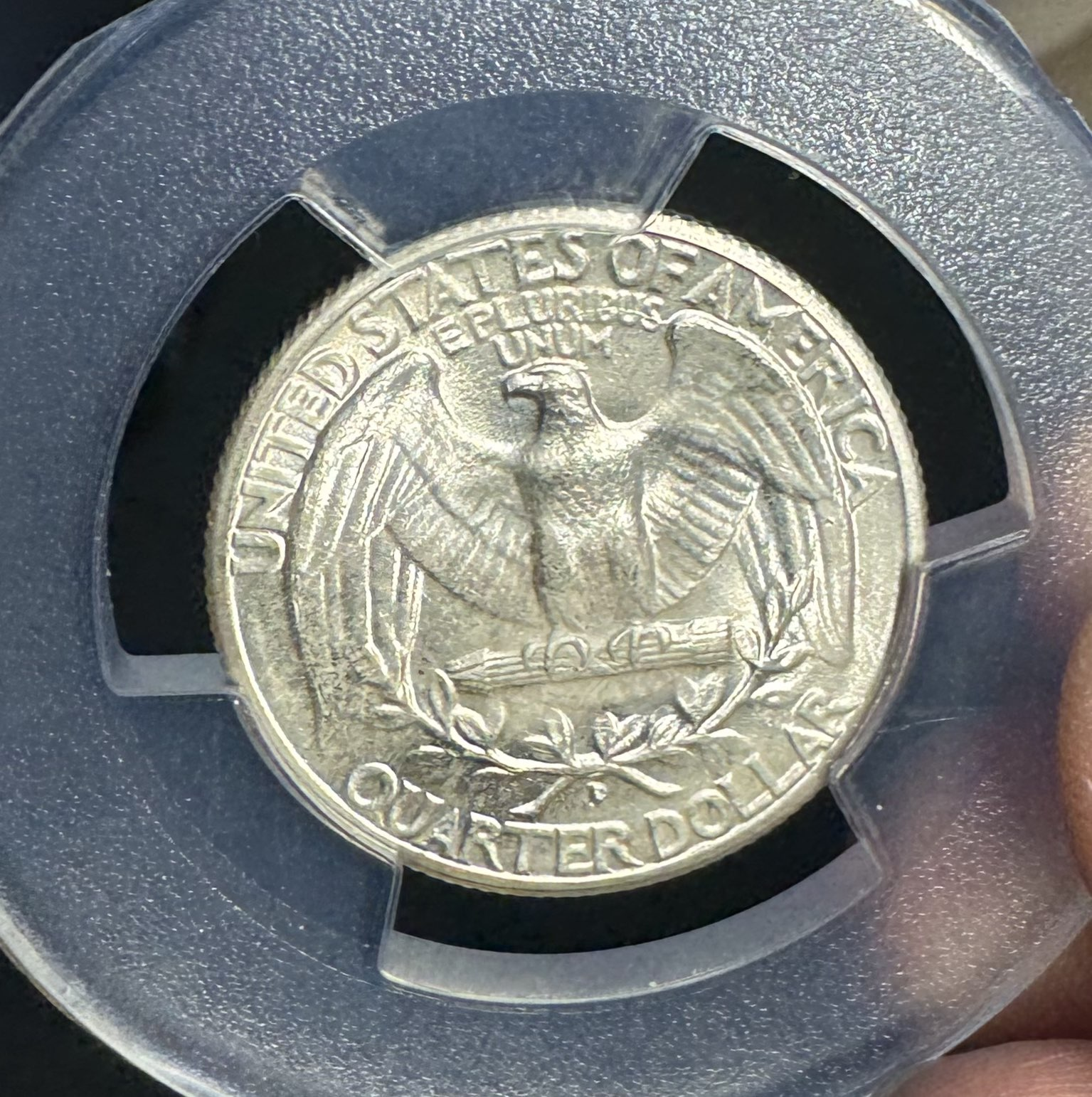
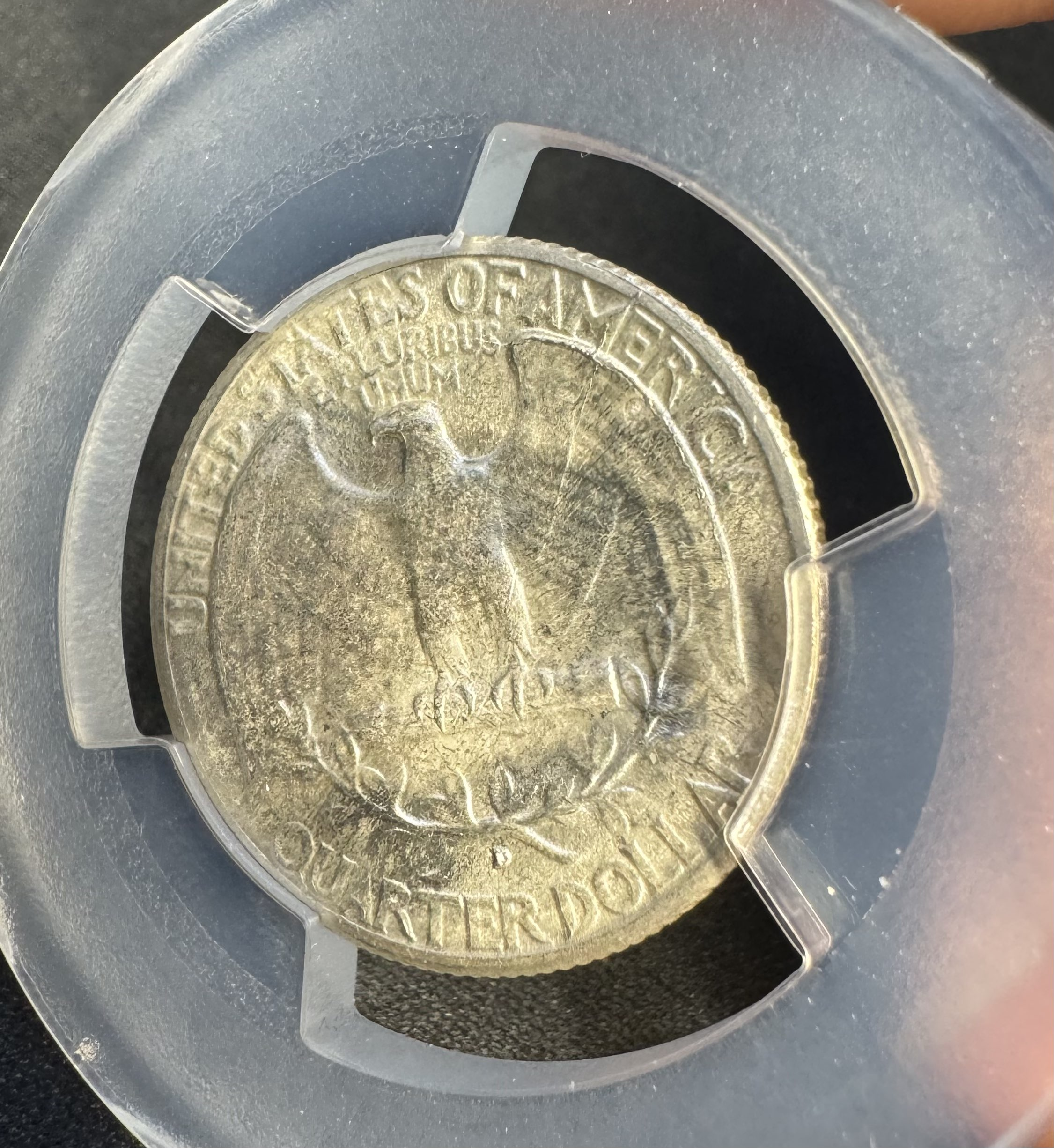
Tagged:
0
Comments
I have attached a Video I took Of It for you guys to view:
Love the die cracks on the reverse.
Paper money eventually returns to its intrinsic value. Zero. Voltaire. Ebay coinbowlllc
I could see where the white spots are a concern, which sadly can not be removed, but to me it's a nice example no less. As for the die crack running through the motto, that in it's self adds to the appeal. Everything else looks good as far as grading. My thoughts anyway.
Improperly rinsed dip... looks like coin was dipped to remove haze... was not properly rinsed after dipping... thus the spots.
Acetone soak should resolve.
Not milk spots.
I've left it in acetone for about 15 mins now, any further instructions on what to do? Its not going away, ill remove it now and see if a rinse in some distilled water removes it.
Rinsed with DI water.... still, to me, looks like improperly rinsed dip.
If it does not come off after 15 minutes in Acetone and a rinse I may be wrong. I don't futz with dips etc much... maybe @CaptHenway can help as I know he knows how to "clean" up coins.
Its hard to see unless under the right angle/conditions but here highlighted is what I am referring to, it is not a deep scratch of sorts but I am assuming not a die crack.
I will keep it in for longer, see if any change shows.
the same dip should remove dip spots
figure out what dip was used and give it a better rinsing
lots of glare on the photos. does it have any hint of toning?
look at the video I posted below the post, no toning its white.
I attempted to use e-zest for few seconds first to see if it did anything with no luck.
you need a list of dips from smoeone more experienced
i don't know well enough, but the usual refrain from those talking over-dipping say the dip removes the toned metal and that takes away luster my inexperience wonders if there is hope trying multiple dips on an untoned coin not causing luster loss
Some of the pictures look as though the coin has already been overdipped. I would just leave it as is.
Not infrequently, when a coin has toned and the toning has etched in the surface, when it’s dipped, similar whitish splotches/spots are apparent and can’t be removed.
Mark Feld* of Heritage Auctions*Unless otherwise noted, my posts here represent my personal opinions.
You may be right, but all we have to go on is the photos, and from the photos I agree with Mr. Feld.
I don’t claim to know whether the coin has milk spots, or it’s showing evidence of toning that has been etched into the surface or a combination of the two.
Mark Feld* of Heritage Auctions*Unless otherwise noted, my posts here represent my personal opinions.
Irregardless of the technical definition of the spots it would be a pass for me, especially if big ticket. I am very picky about what I select for my customers / clients. I don’t question there is somebody out there who possibly would buy it assuming the deal is there for them.